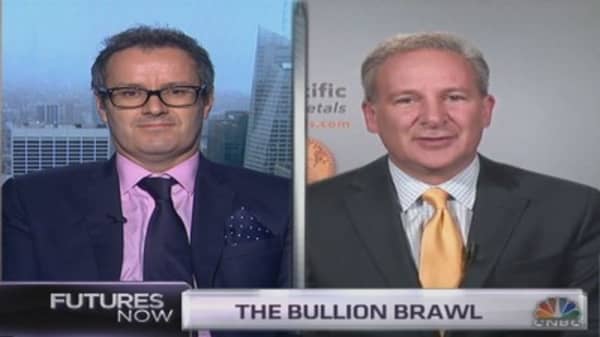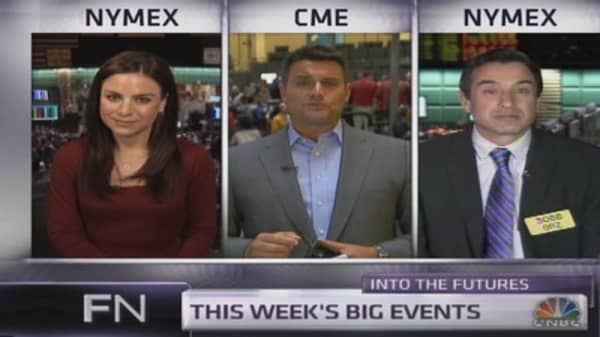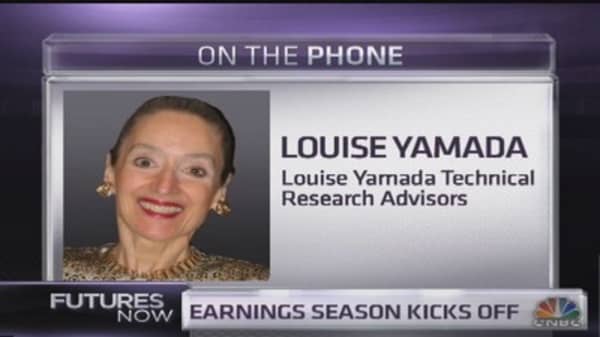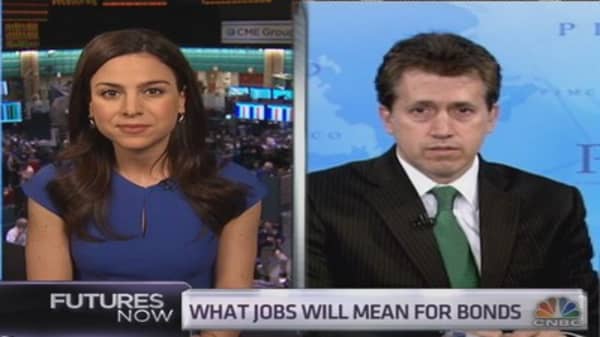Gold suffered its worst day of the year on Tuesday, as bullion fell 2 percent. And when it comes to where gold is going next, Peter Schiff and Paul Krake have completely opposite perspectives.
Krake, of View from the Peak, has a target on gold of $1,000, roughly $300 below current levels. But Schiff, CEO of Euro Pacific Capital, says gold is heading above $5,000.
Schiff's bullish case is premised on the idea that central bank actions will create inflation, which will lead to much higher gold prices.
"Central banks are creating too much money, there's too much inflation, interest rates are too low, and so I want to store my purchasing power in something that central banks can't print," Schiff said on Tuesday's episode of "Futures Now." "I think we're headed much higher because they are not going to stop the presses. They are going to run them into overdrive."
One obvious problem with this thesis is that the Federal Reserve has been reducing, not increasing, the size of its bond-buying program. But Schiff says that quantitative easing will never end.
"If the Fed continues with their taper and ends QE, we will be back in a recession. The stock market will be in a bear market. The real estate market will be in a bear market. And then what is the Fed going to do to respond to that? The only thing it can do is print more money and restart the presses and do more QE," Schiff said.
Read MoreChina's gold fever to cool in 2014
But Krake pointed out that even if Schiff is right, more QE will not necessarily send gold higher.
"Peter, how do justify the following: Last year you had the greatest balance sheet expansion across global central banks in history, yet gold had its worst performance in 30-odd years?" Krake asked.
"Did you ever trade anything? Buy the rumor, sell the fact? Gold rallied for over a decade in anticipation of that," Schiff responded. "We shook out some of the weaker players. Meanwhile, gold is outperforming all other assets in 2014."
That counterargument flabbergasted Krake.
"To make the argument that 'buy the rumor, sell the fact' justifies the greatest move in 30 years versus the greatest balance sheet expansion in central banking history? That is a bit of a lame argument, I'm sorry," Krake said.
Read MoreTraders expect gold to shine even brighter—here's why


















